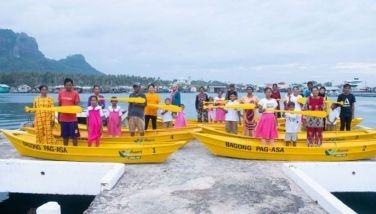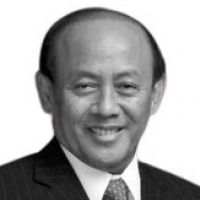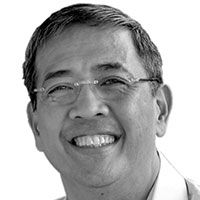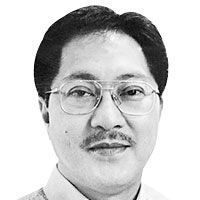Truce
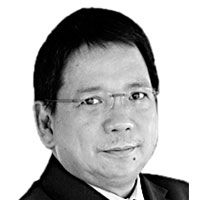
The idea of a unilateral ceasefire, introduced last week by President Duterte, is probably ill-advised.
Unless, of course, the idea was to completely surprise the communists and throw them off balance. That can happen only if we assume the CPP-NPA is a group with corporate integrity and full central control by the bosses based in Utrecht.
The CPP-NPA has neither.
Instead, this is a rather amorphous movement. There are areas, such as in Southern Mindanao, where guerrilla commanders enjoy a tighter grip over policy and operations. They do not necessarily recognize the ageing exiles in Utrecht as their representatives.
In other areas, the lines of accountability are completely blurred. There is a “militarist” wing in this movement that believes the guerrilla organization ought to enjoy primacy over the other branches of the organization. Of course, there is an opposing tendency that this business about “protracted people’s war” is more than a little quaint.
Bloody purges marred the life of this movement. This is likely a function of the extremely undemocratic tradition of the CPP itself.
Organized in 1968 by Joma Sison, surrounded by a band of youthful activists just out of their teens, the first generation of cadres evolved a personality cult around the Leader. That first generation was composed of militants from the Kabataang Makabayan.
Citing the perils of life on the run, there were few consultative meetings while Joma was in control. Instead he issued circulars, poems and essays: all completely modeled after the stilted Maoist language of the Great Proletarian Cultural Revolution.
He presented himself as some sort of minor Mao. All truth emanated from his writings. Those who disagreed were purged or killed.
When Joma Sison was jailed, the successor leadership proved more inventive in its theory and practice. The Manila-based cadres toyed for a while with “insurrectional” strategies. Those cadres eventually split from the main movement. Their armed partisans redeployed to Negros Island. Its leader, Popoy Lagman was eventually assassinated.
Two other leaders, former NPA chief Rolando Kintanar and Arturo Tabara eventually broke from the CPP after Joma, soon after his release, went into exile in Utrecht and issued a document “affirming” the movement’s Maoist orthodoxy. The Kintanar-Tabara faction was eventually called “rejectionists.”
Meanwhile, ideological and strategic differences were settled mainly though kangaroo courts and summary executions. Hundreds of cadres were tortured and killed by their own comrades in several outbreaks of paranoia.
When spouses Benito and Wilma Tiamzon ran operations on the ground (until they were captured a few years ago), it was generally believed they insulated the movement from the old boys’ club based in Utrecht. This is the reason why all the previous attempts at negotiations failed. Sison and his band basically represented no one.
With the Tiamzon couple safely in jail, Sison imaginably is trying to once again organize the CPP around his persona. But there is a new generation of apparatchiks out there in the field.
This new generation includes cadres born long after the Cultural Revolution died. It likewise includes crafty operators who, having grown up under the wings of revolutionary parents, tend to see this undertaking as a way of life – extortion and all. For them, revolution is a cottage industry.
One easily detects a pattern in the “tactical offensives” mounted by the communist guerrillas. They have become largely ceremonial: timed to coincide with anniversaries. There is no sense at all of a movement cumulatively growing and better equipped to orchestrate nationwide campaigns.
Despite the internal repression, the reaffirmation of old orthodoxies, the CPP remains a many-layered community. This is especially true as the former role of activists from the universities diminished while the role of cadres from the “basic masses” became more important. The new generation of local communist leaders tends to be more engrossed with a smaller universe.
When President Duterte announced a unilateral ceasefire Monday last week, he jarred Joma Sison more than anyone else.
Joma has been pretty comfortable pretending to speak for a movement whose complexities escape him and whose cadres are alien to him. He is pretty much role-playing.
He is also struggling with his ideological disposition for “reaffirming” Maoist dictum about the “protracted people’s war” and his own personal predicament. Quickly advancing in age, he yearns to return to the homeland without yielding to the discomfort of altering ideology.
That is an impossible predicament, all things considered.
For nearly three decades now, he has been living off the generosity of the Dutch government on the claim of political persecution. If he returns home, he will lose the pretense. If he comes back here, he will probably not recognize the movement he helped spawn.
His best shot is to win freedom for the “political prisoners” held in our jails. All of them are facing judicial proceedings. None of them can be released by executive fiat alone.
And so it is that the whole movement is now caught in a vise.
Some “Ka Oris”, a Ho Chi Minh look-alike and spokesman for the CPP-NPA in Southern Mindanao claims the government unit ambushed using an improvised explosive device was on “offensive” posture. Joma, for his part, claims his group was ready to file their version of a ceasefire declaration an hour after Duterte withdrew his last Saturday.
These guys are talking at us through the fog. The fact is the CPP-NPA has no mechanism at all for building consensus on the peace proposal. For decades, they have tried to wring tactical gains from the peace process without entertaining the idea of a political settlement.
- Latest
- Trending













